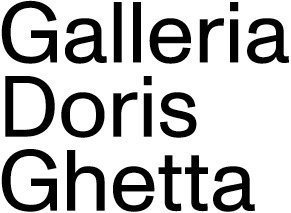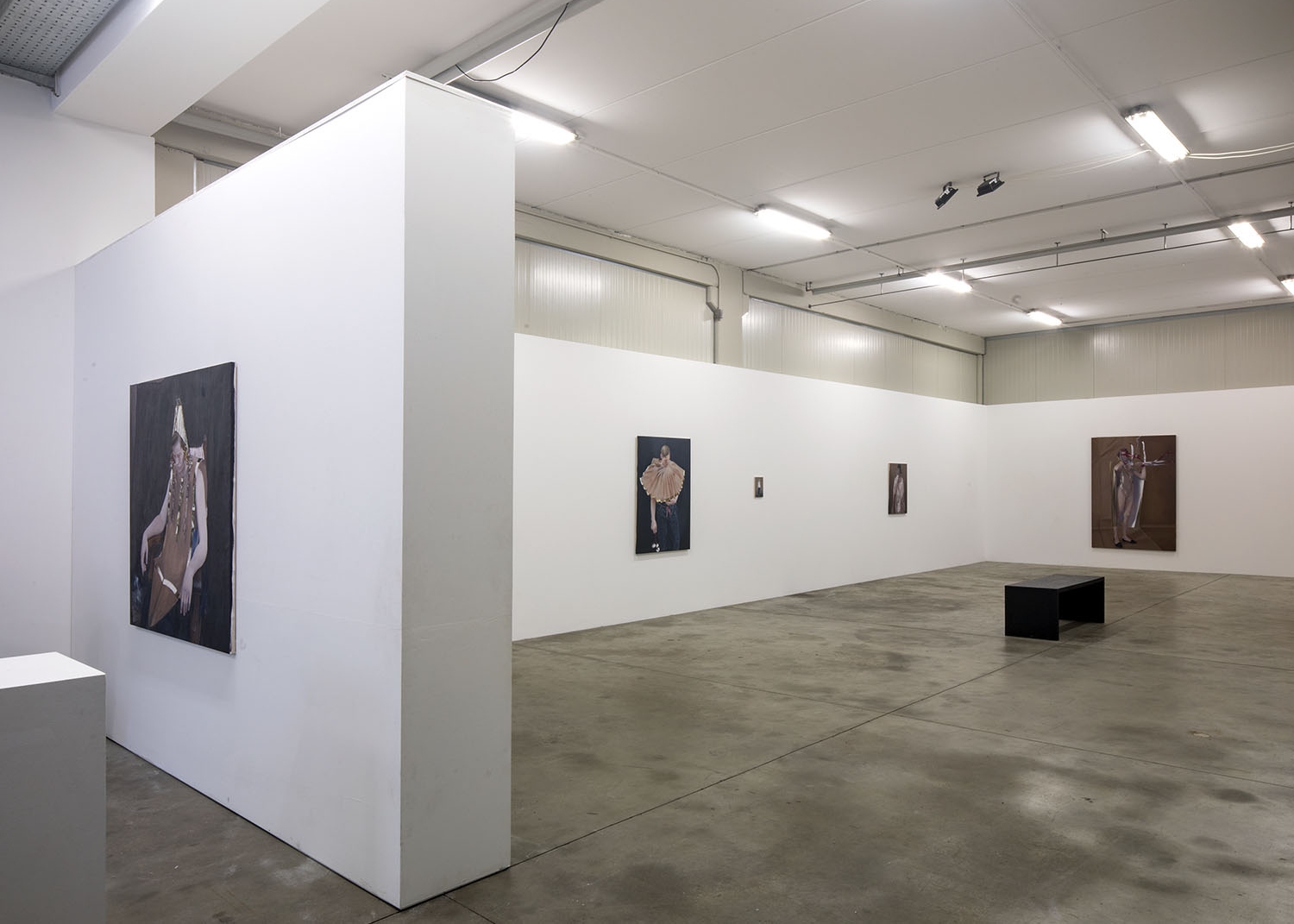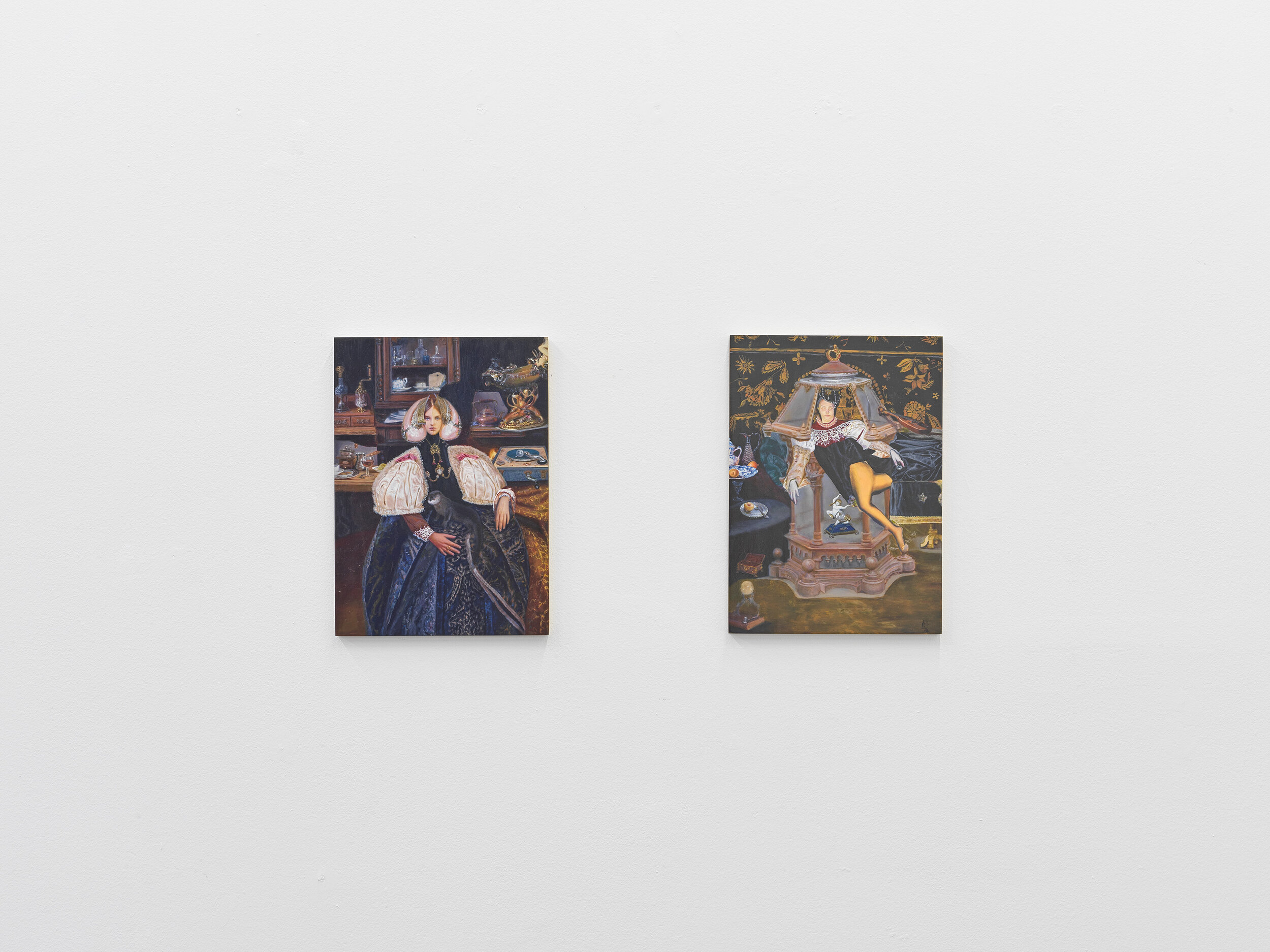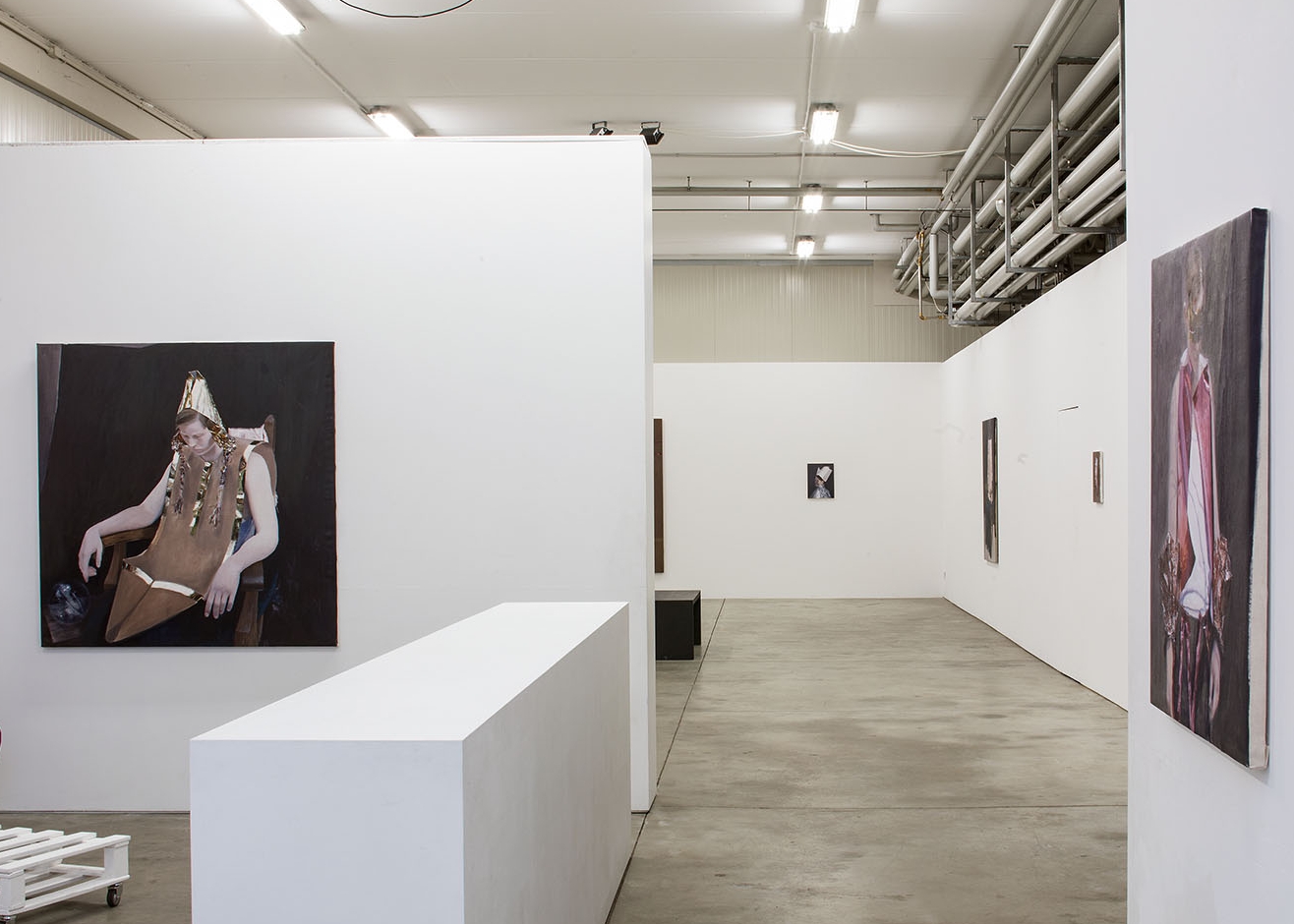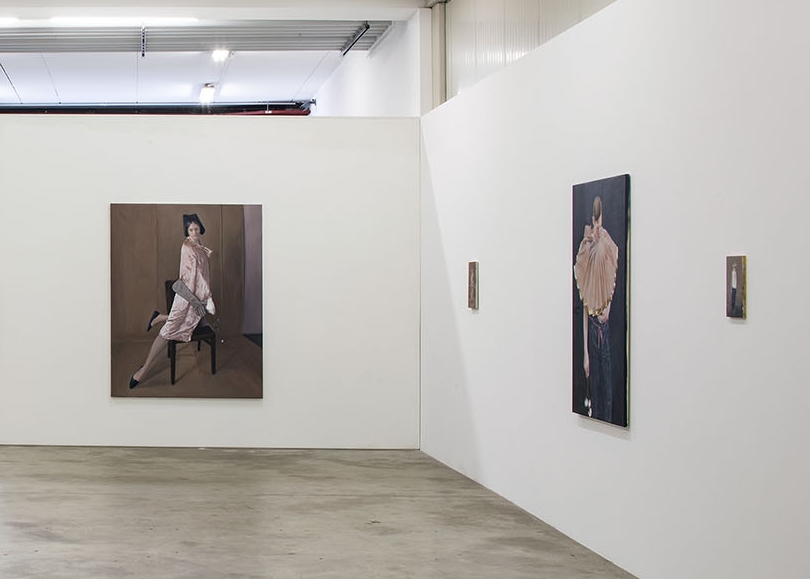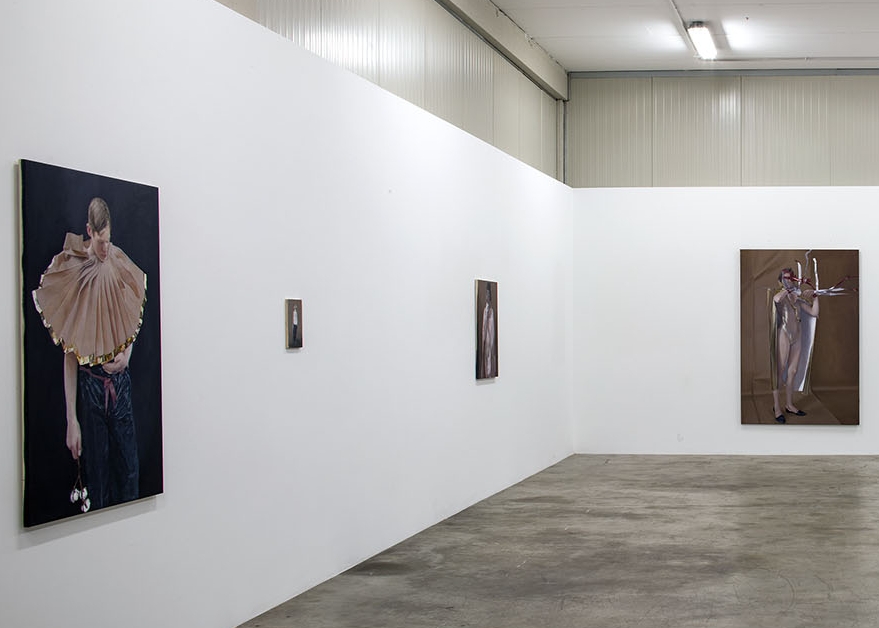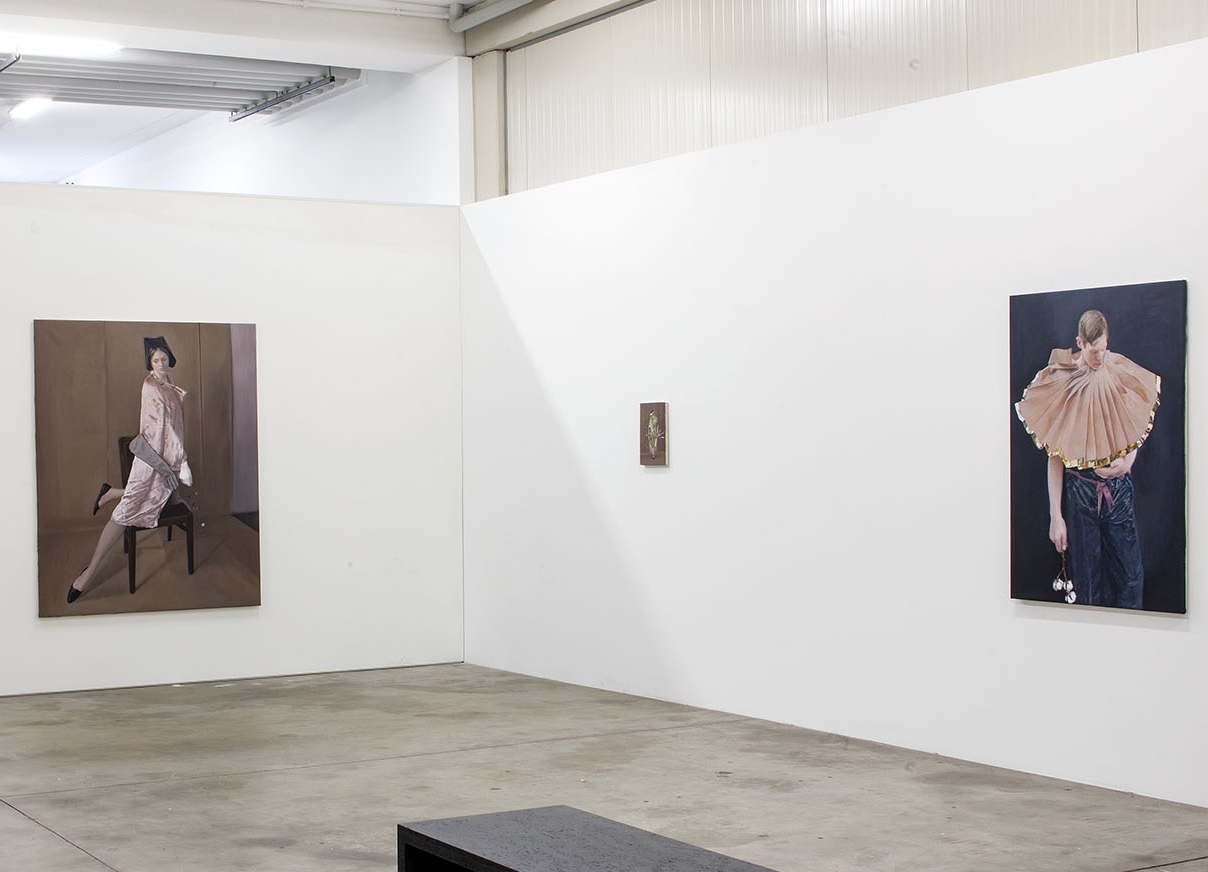TEODORA AXENTE
Press release
Comunicato stampa
TEODORA AXENTE
The Presence of Absence
Vernissage, 15.12.2017 19h
curated by Sabine Gamper
Artist talk
28.02.2018 at 20h
In her paintings, Teodora Axente shows female and male figures dressed in opulent garments reminiscent of stage costumes in theatrical-like spaces. But their movements, their demeanour and the expressions on their faces take us into another world, far beyond external appearance and theatrical representation. By withdrawing from the reality that surrounds them, these figures represent the passage to a world that is different from ours.
The body is depicted as something insubstantial, transparent and fluid; heads are often bowed, eyes are shut and faces are hidden by masks or decorative elements. The observer is attracted by the garments and their glossily iridescent, gilded surfaces, which conjure up an opulent physical presence, behind which the figures appear and disappear. Teodora Axente addresses the theme of passing, non-existence, transience and refusal with great clarity in works such as ‘The Throne’, in which draped fabrics replace the human body and only the immaterial perception of a physical presence remains.
In these works, Teodora Axente draws on the centuries-old tradition of the representation of the body – principally the female body – in relation to the theme of death and passing. In the writings of philosophers such as Elisabeth Bronfen and Christina von Braun, we read how in the pictorial and oral tradition of the western world the opposing concepts of desire and loss are indissolubly bound to the image of the female body. Examples are to be found in the ‘lovely corpse’ of Shakespeare’s Ophelia and also in the fairy tale of Snow White, encased in her glass coffin. In many other cases, we find the figure of the fragile woman, who asserts herself as a strong figure especially at the turn of the nineteenth century.
The relationship between the theme of passing and that of beauty contains a significance that attracts and, at the same time, repels the beholder. Teodora Axente uses this figurative tradition, arranging her figures in it iconographically in an indefinite historical context, simultaneously restoring them to the present time in her rendering of the common fabrics of the garments with refined pictorial technique.
Teodora Axente (Romania, 1984) belongs to the younger generation of the Fabrica de Pensule in Cluj, Romania, an artist community in an old brush factory that became a cultural center over the last years. She did her MFA and PHD at the Univerisity of Art and Design, Cluj Romania and a year of Erasmus in France at the École Supérieur des Beaux-Arts de Rennes. She lives and works in Cluj.
